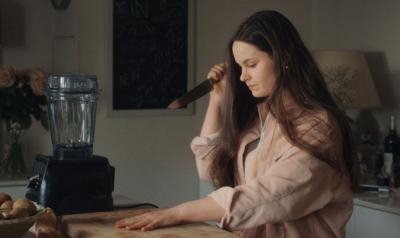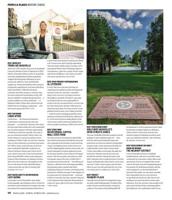Anyone who saw The Beast during its theatrical release this spring will recognize the roots of that film’s elegantly woven skeins of narrative. Made by the same writer-director the year before that film, but only now seeing a brief release at the Belcourt, Coma takes low-key sci-fi and teenage chaos as its primary mode of storytelling, but there’s also a sincere attempt to process the impact of COVID-19 on the actual process of culture.
This dazzling whatsit digs around in the liminal spaces that youth craft in isolation, but also in when they can get beta feedback as well. Coma is breezy as an experience, but it deals with the profound in a way that allows for the topography of limbo and what happens when Donald Trump starts seeping into the discourse even among dolls. (Sincere note: If a Barbie sequel has to happen, it needs to be a Bertrand Bonello/Julio Torres collaboration.)
Writer-director Bonello’s daughter Anna Mouchette Bonello turned 18 during the first year of the pandemic, and so — as one would hope — he listened. Following 2014’s Saint Laurent, which led to 2016’s teenage terrorist masterpiece Nocturama, a defining characteristic of Bonello’s recent work as a director has emerged: Horrified by the legacy of climate collapse, he’s been exploring the way that fatalism has mutated today’s youth, diving into all manner of impulses as a means of engaging with the dark times in which we live as well as the way surveillance culture markets itself. Coma is a film about looking around at the world and being deeply freaked out by the shape it’s in. (Though there’s some degree of a happy ending in father and daughter collaborating on film scores together, as they did on The Beast.)
You would probably not expect a film made in this timespace to be this funny and unconventionally terrifying. But our unnamed teenage protagonist (Louise Labèque, from Zombi Child) and her friends are all about defining their own circumstances — whether that means YouTube wormholes with postmodern icon Patricia Coma (Julia Faure, a deadpan Almodóvarian take on Max Headroom), techno-philosophy, gathering in amorphous Zoom chats or even reviving the classic Kids in the Hall sketch “Who’s the Cutest Boy on Death Row?”
As with The Beast, this is resolutely not a horror film, yet it features one of the scariest scenes of 2022 — something that retroactively plays on every early Zoom fear, and does so in a way that scratches at the one absolute bulwark that parents could take from the prescribed isolation. As oceans rise, safety itself becomes an unsettling variable, and this film — an apology, a benediction and a case study — bears witness. It’s truly essential viewing, trippy and searingly truthful.





